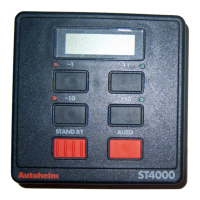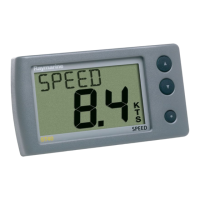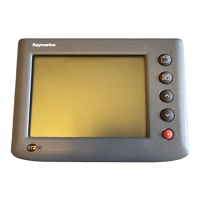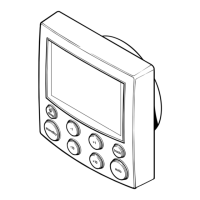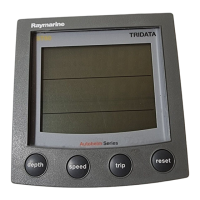Chap t e r 7 : Post I ns t al l a t i on Pr o c e du r e s
93
extend or retract the push rod using the -1, +1, -10 and +10 keys.
3. Press auto to lock onto the current heading. A constant heading
should be achieved in calm sea conditions.
4. Use the -1, +1, -10 and +10 keys to alter course to port or
starboard in multiples of 1∞ and 10∞.
5. Press st andby and disengage the autopilot to return to hand
steering:
Wheel Pilot: Disengage the wheel drive clutch by rotating the
clutch lever anti-clockwise.
Tiller Pilot: Remove the actuator from the tiller pin. You can
retract the push rod, using the –1 and +10 keys, for stowage.
Che ck i n g t he r ud de r g a i n
The factory set rudder gain level will provide stable control for initial
sea trials. However, vessels can vary widely in their response to the
helm, and further adjustment to the rudder gain may improve the
autopilotís steering characteristics.
The following test will determine whether the rudder gain is set too high
or too low.
1. In clear water and with the autopilot in Auto, alter course to
starboard by 40∞ by pressing the +10 key four times.
ïAt cruising speeds, course changes of 40∞ should result in crisp
turns followed by an overshoot of no more than 5∞. If this
occurs the rudder gain is adjusted correctly.
ïAn excessively high rudder setting results in oversteer. This is
recognised by a distinct overshoot of more than 5∞ (A). This
condition can be corrected by reducing the rudder gain setting.
ïSimilarly, an insufficient rudder control setting will result in
understeer which gives sluggish steering performance (B). If
the vessel takes a long time to make the turn and there is no
overshoot then the rudder setting is too low.
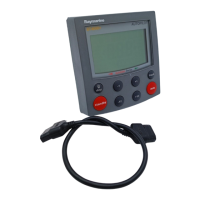
